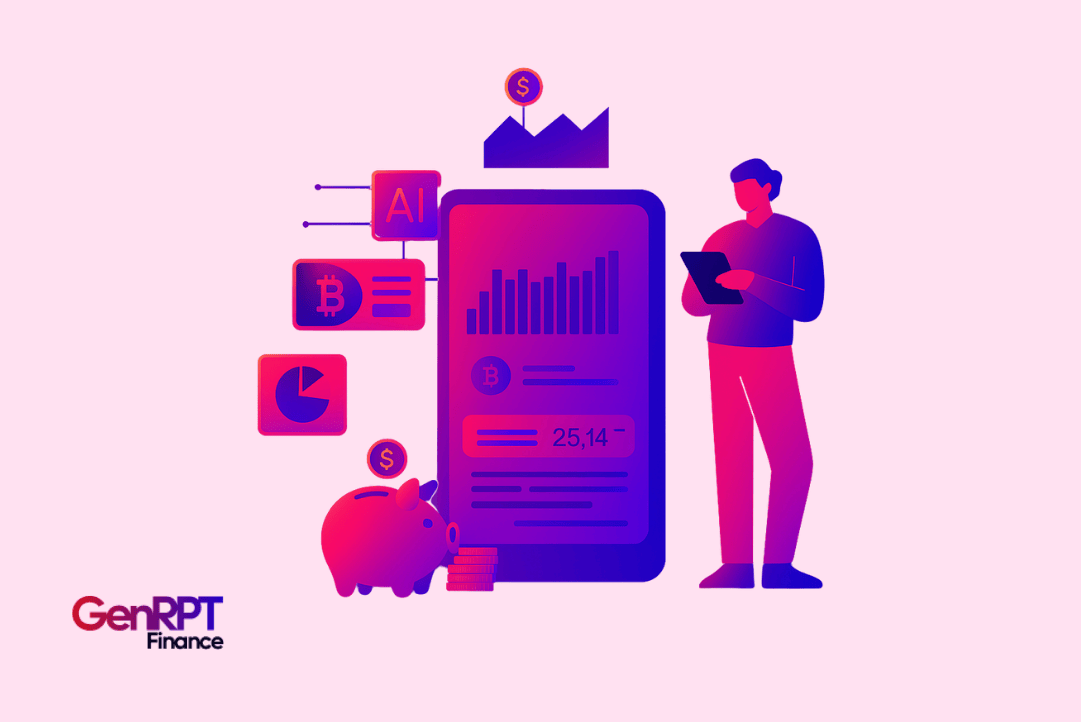
How GenRPT Finance Helps You Interpret Financial Data
October 9, 2025 | By GenRPT Finance
Investing wisely starts with understanding the numbers behind a company, but raw data alone isn’t enough. It’s the interpretation that separates smart investment decisions from blind guesses. At GenRPT Finance, we believe financial data should tell a clear story: one that helps analysts, advisors, and portfolio managers make confident, data-backed choices.
This guide explains how to read key financial reports, identify meaningful ratios, and use AI for equity research to make smarter investment calls.
Why Financial Data Matters
Every company’s financial data holds the blueprint of its performance, its earnings, assets, liabilities, and cash flows. When you know how to interpret this data, you can answer crucial questions like:
1. Is the company growing sustainably?
2. Can it manage its debt?
3. How stable are its cash flows?
4. What risks could affect long-term returns?
This process, known as equity research, gives analysts and investors the insights needed to evaluate performance, identify opportunities, and mitigate risks.
The Core Financial Reports to Understand
1. Income Statement
Shows how much a company earns and spends over a period. Look for:
-
Revenue Growth: Indicates business expansion.
-
Operating Margin: Reveals efficiency.
-
Net Income: Shows profit after all costs.
2. Balance Sheet
Provides a snapshot of what the company owns and owes. Focus on:
-
Debt-to-Equity Ratio: Measures leverage and financial risk.
-
Current Ratio: Tests short-term financial strength.
-
Book Value: Reflects intrinsic company worth.
3. Cash Flow Statement
Tracks how cash moves in and out of the company. Positive cash flow means financial stability. Analyze:
-
Operating Cash Flow: Core business health.
-
Investing Cash Flow: Asset purchases or divestments.
-
Financing Cash Flow: Loans, dividends, or stock buybacks.
Together, these reports form the foundation for risk analysis and investment evaluation.
Key Ratios Every Investor Should Know
Ratios simplify complex data into clear indicators. Some of the most reliable ones include:
-
Price-to-Earnings (P/E) Ratio: Shows how much investors pay per unit of earnings.
-
Return on Equity (ROE): Measures profitability relative to shareholder equity.
-
Earnings Per Share (EPS): Indicates how profitable each share is.
-
Debt-to-Assets Ratio: Evaluates stability and debt reliance.
Financial advisors and wealth managers rely on these ratios to compare peers and assess valuation fairness.
Beyond Numbers: The Broader Context
Good equity research doesn’t stop at spreadsheets. Analysts also examine:
-
Management quality
-
Industry trends
-
Competitive position
-
Macroeconomic outlook
For example, a company may show high revenue growth but operate in a declining sector. Or it may have strong profits but be overexposed to interest rate fluctuations. These insights help in risk mitigation and portfolio diversification.
How AI Is Redefining Equity Research
Traditional data analysis is slow and error-prone. That’s where AI for equity research comes in. Modern AI tools like GenRPT Finance accelerate the process by:
1. Extracting and analyzing financial data from multiple sources
2. Detecting performance trends and anomalies
3. Generating complete AI-powered equity research reports in minutes
4. Providing instant comparisons across industries and time periods
This automation frees analysts to focus on interpreting insights instead of managing data.
How to Read Financial Data Like a Pro
You can analyze any company’s financials by following a systematic approach:
1. Start with the Income Statement: Check multi-quarter revenue growth and margin consistency.
2. Move to the Balance Sheet: Review debt levels and capital structure.
3. Study the Cash Flow Statement: Ensure the company generates positive cash flow.
4. Compare Ratios: Use P/E, ROE, and EPS against industry benchmarks.
5. Analyze External Trends: Consider inflation, interest rates, and sector demand.
This helps transform raw data into actionable insights, just as GenRPT Finance does automatically for its users.
Example: Putting Analysis Into Practice
Imagine comparing two fintech companies with identical quarterly revenue of ₹80 crore.
-
Company A: Rising debt, declining operating cash flow, and irregular profits.
-
Company B: Consistent ROE, strong margins, and steady cash generation.
While topline numbers look similar, Company B clearly reflects operational strength and lower risk. AI-based equity analysis in GenRPT Finance highlights such contrasts instantly, saving hours of manual work.
Red Flags to Watch
Not every financial report tells a healthy story. Be cautious if you notice:
1. A sudden drop in EPS or revenue
2. Negative operating cash flow over multiple quarters
3. Increasing debt without matching asset growth
4. Frequent changes in auditor reports or accounting policies
These signals often precede instability or governance issues, helping analysts adjust strategies early.
Staying Updated with AI Insights
Financial interpretation isn’t a one-time exercise. Markets evolve, and so must your insights.
GenRPT Finance provides:
1. Automated alerts on earnings and valuation changes
2. AI summaries of analyst calls and filings
3. Peer benchmarking dashboards for quick comparisons
This ensures portfolio managers, wealth advisors, and investment analysts can make real-time, data-backed decisions.
Conclusion
Interpreting financial data is about connecting numbers to narratives. By combining income statements, balance sheets, cash flows, and ratios, investors gain a clear view of company health.
With tools like GenRPT Finance, those insights come faster, sharper, and ready for decision-making.
Our AI-powered equity research reports transform raw numbers into boardroom-ready intelligence, helping financial professionals make confident, informed, and smarter investment decisions.
